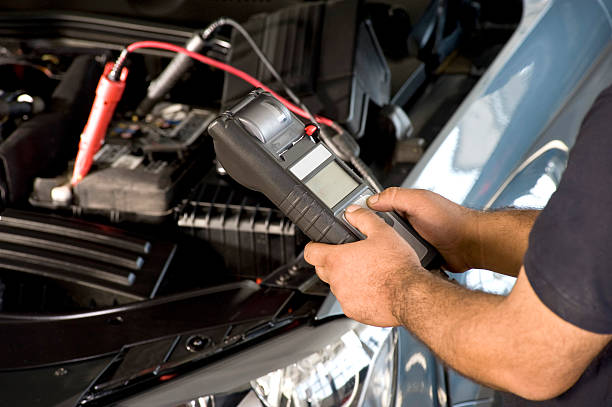August 3, 2024
What is the main cause of car battery failure?
The main cause of car battery failure is usually age and wear. Over time, the components inside a battery degrade, leading to a reduced ability to hold a charge. However, several other factors can also contribute to battery failure:
- Extreme Temperatures: Both very hot and very cold temperatures can shorten a battery’s lifespan. Heat can cause the water in the battery’s electrolyte to evaporate, leading to damage to the internal structure, while cold temperatures can reduce the battery’s ability to start an engine by thickening the oil and slowing down the chemical reactions inside the battery.
- Short Drives: Frequently taking short trips can prevent the battery from fully recharging, leading to a state of undercharge. Over time, this can cause the battery to lose its ability to maintain a full charge.
- Parasitic Drain: Electrical devices and systems in the car, such as lights, electronics, and alarms, can draw power from the battery even when the car is turned off. If these systems draw too much power, the battery can drain faster than it can recharge.
- Corroded or Loose Battery Connections: Poor electrical connections can prevent the battery from charging properly. Corrosion at the terminals or loose connections can lead to a reduced flow of electricity.
- Faulty Charging System: If the alternator or voltage regulator fails, the battery may not charge properly, leading to battery failure.
- Manufacturing Defects: While less common, a battery can fail prematurely due to defects in manufacturing.
Regular maintenance, such as checking the battery terminals for corrosion, ensuring the battery is securely mounted, and keeping an eye on the battery’s age, can help prevent unexpected battery failure.
How to check car battery health?
Checking the health of a car battery is an important maintenance task that can help prevent unexpected failures. Here are several methods to check your car battery’s health:
1. Visual Inspection
- Check for Corrosion: Look at the battery terminals for any signs of corrosion (white or bluish powder). Corrosion can impede the battery’s performance.
- Inspect the Battery Case: Ensure the battery case is not swollen, cracked, or leaking. Any of these signs indicate a problem, and the battery may need to be replaced.
- Check the Battery Fluid Level: Some batteries have a translucent casing or removable caps. If the fluid level is low, it could indicate a potential problem.
2. Using a Multimeter
- Set the Multimeter to DC Voltage: Most multimeters have a setting for DC voltage. Set it to a range that can read at least 20 volts.
- Test the Battery: With the car off, place the red probe on the positive terminal and the black probe on the negative terminal. A fully charged battery should read around 12.6 volts or higher. If the voltage is below 12.4 volts, the battery might be undercharged, and if it’s below 12 volts, the battery may be weak and need replacement.
- Perform a Load Test: If the car has been sitting, turn on the headlights for a couple of minutes to remove any surface charge, then recheck the voltage. If it drops significantly, the battery may be weak.
3. Load Testing
- Use a Battery Load Tester: A load tester applies a load to the battery while measuring the voltage. A healthy battery should maintain a voltage above 9.6 volts under load. Load testers are available at auto parts stores or can be done by a professional.
- Observe the Load Test Result: If the voltage drops too low during the load test, it may indicate that the battery is nearing the end of its life.
4. Check with a Battery Health Monitor
- Use a Battery Health Monitor: These are small devices that connect to your car’s OBD-II port or directly to the battery. They can monitor the battery’s health over time, providing real-time information on your smartphone.
5. Visit a Professional
- Professional Battery Test: Many auto parts stores and mechanics offer free battery testing services. They have specialized equipment that can provide a more comprehensive analysis of your battery’s health, including its ability to hold a charge and its internal resistance.
6. Check the Alternator
- Check Alternator Output: While the engine is running, check the battery voltage again. It should read between 13.7 and 14.7 volts. If it’s outside this range, the alternator might not be charging the battery properly.
Regularly checking your battery’s health, especially before long trips or during extreme weather conditions, can help ensure you don’t get stranded with a dead battery.

